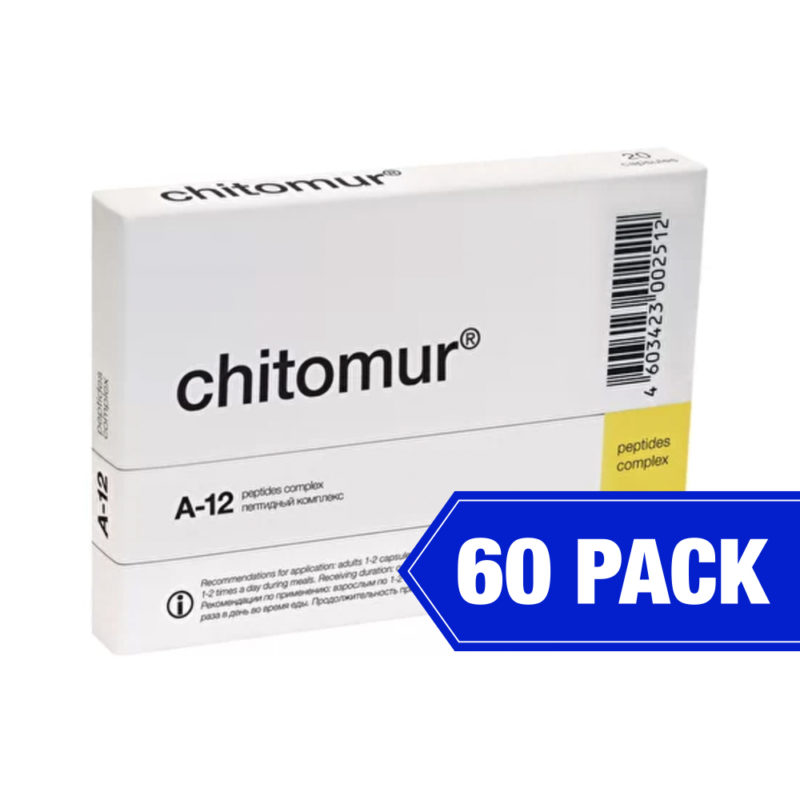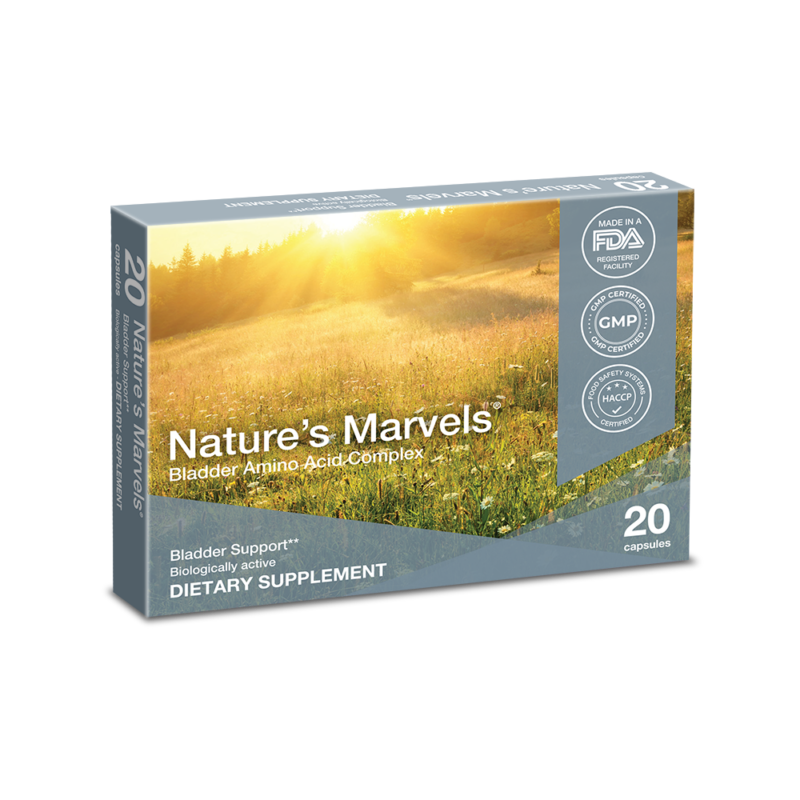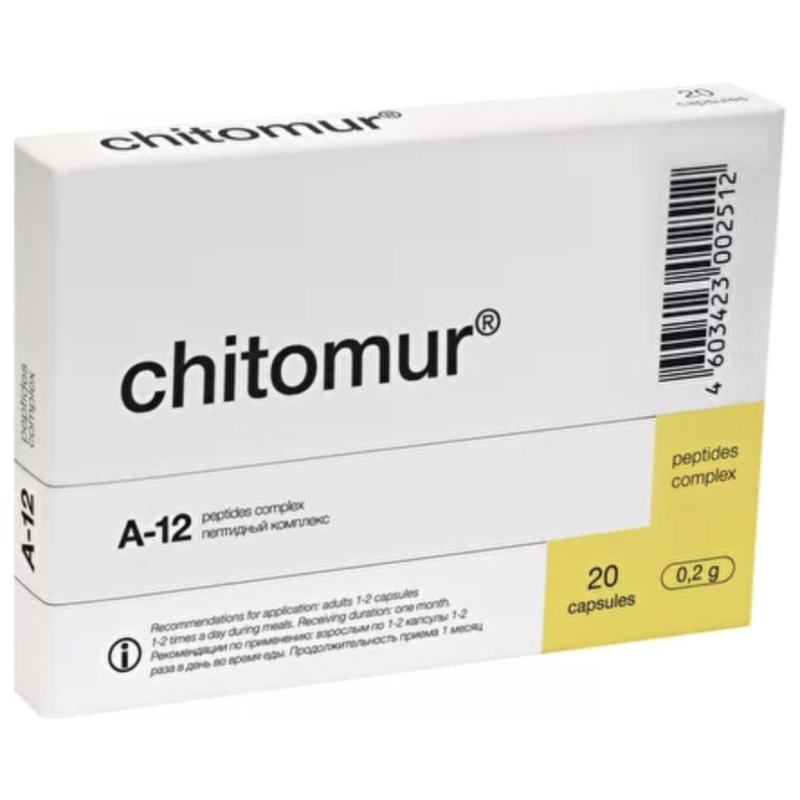REPORT on the results of clinical study of peptide bioregulator Chitomur
Chitomur®
A report of the results of clinical study of the biologically active peptide bioregulator of urinary origin:
The biologically active peptide bioregulator Chitomur contains a complex of low-molecular peptides with molecular weight up to 5000 Da, isolated from the tissues of the urinary bladder wall of young animals – calves aged up to 12 months.
Chitomur is manufactured in the form of tablets or capsules with a content of active substance 10 mg.
Experimental studies have shown that the peptides possess tissue-specific action on the cells of the tissues from which they were isolated. Chitomur peptides regulate metabolism processes in the urinary bladder wall cells, increase their safety margins, having a favorable effect on the organism adaptation processes in extreme conditions, the possess anti-oxidative properties, regulating peroxide oxidation processes in the urinary bladder wall tissues. So it is possible ot extrapolate an efficiency of administration of Chitomur for restoration of the function of the urinary bladder and their disorders of various origin.
Among the disease most frequent in elderly persons there is one which considerably worsens quality of life of the patients and worsening a course of concomitant pathology – it is pathology of urine bladder. There are many elderly persons with various functional disorders of lower urinary tracts, especially – overactive bladder (OAB). The diagnosis is made when there is no hormonal, metabolic or other obvious diseases (urinary infection, urinary bladder cancer, prostate adenoma etc.), which may result in these symptoms.
The risk of overactive bladder syndrome is higher late in life. Critical age is 60 years – the elderly persons of this age have highest OAB frequency. Increase in the risk of OAB for men can also be explained by benign hyperplasia of prostate, which affects about half of all men at the age of 60. Thus, absence of hyperplasia not necessarily means age-related changes of urinary bladder, which are nearly identical in men and women.
It is assumed that postmenopausal period is also related to increased risk of OAB development. More than 60% of menopausal women have urination disorders. However a role of sex hormones is not quite clear. The results of replacement hormonal therapy in such patients are not so clear, and instead of improvement it may result in worsening of OAB symptoms. Thus many anatomic and physiological age-related changes can result in OAB symptoms development. Nevertheless urina incontinence cannot be considered as the only sign of ageing. In addition some functional disorders such as limited mobility and functional disorders of upper extremities, together with poor eyesight can worsen the course of OAB. It should be remembered that pharmacological preparations, used for treatment of concomitant diseases, can also play a part in it. For example diuretic agents may result in considerable increase in urination frequency and imitate OAB symptoms.
Treatment of urinary bladder dysfunction depends of etiology of pathological condition. Chronic cystitis requires antibacterial therapy; detrusor dysfunction requires atropine group medicines; neurogenic urinary bladder disorder – M-cholinoblockers (oxybutin, tolterodin, dariphnacin).
Clinical characteristic of the patients
Clinical study of Chitomur use was carried out at the Medical center of the Saint Petersburg Institute of Bioregulation and Gerontology during the period from March till November 2011. 28 men at the age from 45 to 62 years with a diagnosis benign prostate hyperplasia (BPH) and 31 women жt the age from 48 to 56 years with a diagnosis overactive bladder (OAB) have taken part in the study. All the patients were complaining of urination dysfunction.
Table 1
Distribution of the patients by clinical entities and age
|
Diagnosis |
Age (years) |
Number of patients |
|
|
Control group |
Main group |
||
|
Benign prostate hyperplasia |
45-62 |
10 |
18 |
|
Overactive bladder |
48-56 |
9 |
22 |
|
In total |
|
19 |
40 |
The patients of the main groups (18 men and 22 women) have also been taking Suprefort® in addition to the general purpose medicines – 1 capsule, 2 times a day before meal for 30 days. The patients of the control group (10 men and 9 women) received only general purpose treatment. Distribution of the patients by groups is shown in the table 1.
Chitomur efficiency was assesses on the basis of the patients complains, general clinical examination of blood and urine, biochemical blood analysis, abdominal pressure level at urination and urine flow, fluometric index .
Examination results
The results of clinical study of Chitomur have shown, that pollakiuria (polyuria) has completely disappeared in 88.3% of patients with BPH, 93.2% of patients does not need to urinate at night. Stranguria (difficult urination) has disappeared in 74.8% patients and 26.7% of patients have noticed considerable improvement of the urine flow and alleviation of urination.
Dynamics of the results in patients with BPH before and after the treatment course of treatment using Chitomur is shown in the table 2.
Table 2
Influence of Chitomur on the urodynamics in patients with benign hyperplasia of prostate.
|
Parameter |
Before treatment |
After treatment with general purpose medicines. |
After treatment using Vesilut |
|
Urinary retention time |
4,5±0,6 |
3,4±0,4* |
2,2±0,3* |
|
Number of urination – Day time – Night time
|
8,7±0,2 3,7±0,3 |
7,2±0,3* 2,9+0,2 |
6,3±0,1* 2,0+0,4 |
|
Abdominal pressure degree, points |
3,2 |
2,7 |
2,3 |
|
Urine flow type, points |
3,4 |
2,5* |
2,2* |
|
Average urination speed, ml/sec |
13,5±1,3 |
15,1±1,6 |
19,4±1,4* |
|
Maximum speed of urination, ml/sec |
17,2±1,8 |
19,1±1,5 |
21,4±1,6 |
|
Time to maximum urination speed, ml/sec |
6,4±0,1 |
5,4±0,2*
|
4,4±0,4*
|
*Р<0.05 reliable=”” in=”” comparison=”” with=”” the=”” parameter=”” before=”” treatment=”” p=””>
The state of health of the patients with BPH after treatment using Chitomur was characterized by improvement of subjective and objective indices or urodynamics.
It is worth noting that uroflowmetry results, registered after treatment of patients with BPH of I and II stage, have shown restoration of basic urination parameters to normal values. In case of III stage of the diseases it was prevented by decrease in elasticity of bladder neck due to sclerotic changes of the pancreas tissue, but the patient had considerable improvement of the urine flow.
Women with climacteric syndrome and concomitant overactive bladder after Chitomur course have notices 38% decrease in imperative micturate urges and 43% decrease in the episodes of urgent incontinence, besides the assessment by the patients of the condition of the bladder has also improved. The degree of discomfort has decreased 1,8 times due to elimination of imperative urges, anxiety degree has decreased by 57%, and treatment satisfaction has reached 78%. Thus according to self-assessment of the patients, the decrease in anxiety due to urination disorder symptoms 1,8 times is better than positive dynamics of the symptoms, that is a sign of prevailing improvement in the quality of life of the women after treatment.
In a month after the end of treatment using Chitomur, all the patients have achieved an improvement in symptoms. After the end of administration of the drug the capacity of the bladder in these patients has increased by 10-20% for different urges. That can be explained by decrease in detrusor ischemic, which is really important for OAB pathogenesis.
Thus the results of the study carried out confirm therapeutic efficiency of Chitomur and expediency of its application as a part of complex treatment of diuretic disorders of various origin, including diseases of prostate in men and women with overactive bladder symptoms.
Chitomur does not cause any side effects, complications and drug dependence and can be used for treatment and prophylaxis, including in combination with any means of symptomatic therapy, used for urological practice (antibacterialm spasmolytics, vascular and hormonal preparations, vitamins etc.)
Conclusion
Biologically Active Food Additive Chitomur regulates functional activity of the cells of the wall and detrusor of the bladder, and normalizes urination function.
Chitomur is well tolerated by patients at oral administration; it does not result in any side effects and can be widely used as a treatment and prophylactic biologically active peptide bioregulator.
Chitomur is recommended to patients with urination disorders of various origins – per os at meal time 1-2 capsules 2-3 times a day for 30 days. It is recommended to carry out another treatment course in 3-6 month.
References
1. Mashkovsky M.D. Medicines: Pharmacotherapy for doctors, manual: 2 parts. – Vilnius: ZAO “Gamta”, 1993.
2. Andrology manual / Edited by O.L. Tiktinsky L.: Medicine, 1990. – 416 pages
3. Sexopathology: guide / Edited by G.S. Vasilchenko.- M.: Medicine, 1990. – 576 pages


